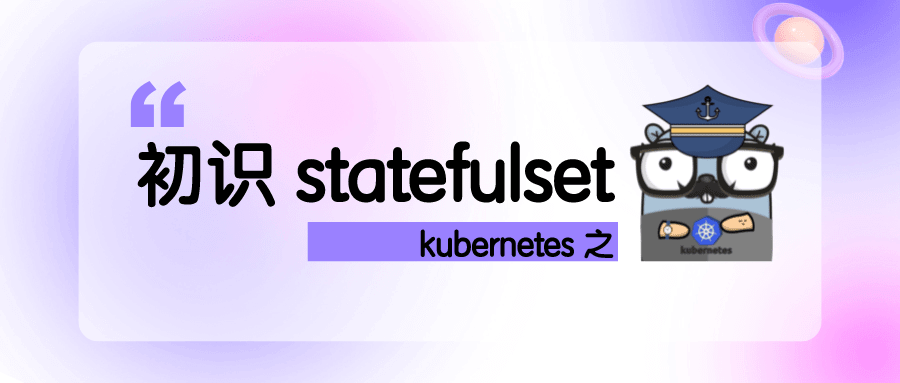《一起读 kubernetes 源码》probe 监控 pod 状态
📢 注意,该文本非最终版本,正在更新中,版权所有,请勿转载!!
前言
当我们知道了 pod 的生命周期,那么 k8s 如何知道一个 pod 的健康状态呢?就是通过今天要说的 Probe 也就是探针来检查 pod 的状态。一方面可以监控 pod 的健康状态,重启不健康的 pod;另一方面还可以监控 pod 的服务状态,当 pod 能提供服务时才会将流量打进来。
前置知识
- livenessProbe
- readinessProbe
- startupProbe
要知道这三种探针的能力 https://kubernetes.io/zh-cn/docs/concepts/workloads/pods/pod-lifecycle/#types-of-probe
心路历程
探针这个东西就和 request limit 一样,你不配置的话,绝大多数适合,使用起来也问题不大。甚至在一开始的时候我都没注意到这个配置,但是当你的服务非常注重 SLA(承诺服务可用性) 或者你的容器出现了异常,无法服务又没有正确退出的时候,这个配置就显得非常有用了。而在实际中,不合适的探针配置也可能会导致奇怪的问题。
所以,针对探针,想要实际了解一下它具体是如何做的,防止一些意外使用。
码前提问
- 探针究竟是谁在探?master?worker?node?pod 自己?
- 探针是什么时候启动的?
- 探针何时停止?
源码分析
寻码过程
这次当然是搜索 probe 或者你搜索具体 livenessProbe 也可以找到对应的定义和接口。因为我看到的具体已经有连个目录名字就是 probe 所以优先确认目录下的代码是否为我需要的。
- pkg/kubelet/prober 这里看起很像
- pkg/probe 这个目录下有几个子目录,名称是:http、tcp 我就知道这个目录是 probe 的具体实现,具体是以一个什么方式去探活
由于我们本次的目标不在于具体如何探活(发送一个 http 请求没啥看的)所以我们关注pkg/kubelet/prober目录下的源码
prober_manager.go
首先映入眼帘的就是 prober_manager.go 从命名就可以看出它是管理员,那先来看一下内部的定义
1 | type manager struct { |
有一个 map 包含了所有 worker,然后一个锁,那既然这样,可以猜测 worker 就是最终干活的了。也应该是它来完成最终的 探针 工作。
看完结构,再看方法,manager 有两个很重要的方法:
func (m *manager) AddPod(pod *v1.Pod)func (m *manager) RemovePod(pod *v1.Pod)
显然这两个方法就是将 pod 添加到管理中,还有移出去的。
下面的代码就是 AddPod 中遍历找到所有探针的配置,然后进行创建,可以看到,如果 workers map 中没有,那么就会新建一个 worker 并且开一个协程去跑这个 worker 。
1 | // pkg/kubelet/prober/prober_manager.go:185 |
那么只要知道谁调用了 AddPod 方法就能知道什么时候探针被启动了。我们发现调用的位置只有一个:pkg/kubelet/kubelet.go:1916 也就是:func (kl *Kubelet) SyncPod 方法中。
此时让我们回忆一下 kubelet 创建 pod 的时候的调用过程:
- podWorkerLoop
pkg/kubelet/pod_workers.go:1213 - SyncPod
pkg/kubelet/pod_workers.go:1285 - Kubelet.SyncPod
pkg/kubelet/kubelet.go:1687 - kl.containerRuntime.SyncPod
pkg/kubelet/kubelet.go:1934 - startContainer
pkg/kubelet/kuberuntime/kuberuntime_container.go:177
没错就是第三步骤,而且注意是在第四步骤之前哦。
什么时候停止
在 go 中有一个编码规范:当你使用 go 启动一个协程时,你必须要清楚的知道它什么时候会退出。否则容易导致协程泄露。
那么既然 probe 是开协程启动的,那么什么时候会停止呢?那肯定要看 run 方法里面了
1 | // pkg/kubelet/prober/worker.go:145 |
其本质就是根据用户配置的 PeriodSeconds 时间定时执行 doProbe() 方法,而退出则是在 stopCh 有消息的时候,那什么时候来消息呢?是 worker.stop() 的时候。而调用 worker.stop() 方法的位置有三个。
func (m *manager) StopLivenessAndStartupfunc (m *manager) RemovePodfunc (m *manager) CleanupPods
看方法名你应该就明白探针被关闭的时间了。
doProbe
for w.doProbe(ctx) { 执行探针的过程虽然代码长,但并不复杂。还是需要抓主要矛盾,精简之后就是如下的部分:
1 | func (w *worker) doProbe(ctx context.Context) (keepGoing bool) { |
w.probeManager.prober.probe其实就是根据具体不同的探针类型去执行不同的探针方法了。w.resultsManager.Set最关键的就是这里,最终将探针探测的结果通过Set方法传递了出去,为啥说传递呢?因为其内部就是一个updates chan Update的 channel。这样解耦了探测和状态改变。
码后解答
- 探针究竟是谁在探?master?worker?node?pod 自己?
- 原来还是 kubelet,它通过一个 goroutine 来启动探针。
- 探针是什么时候启动的?
- 在 SuncPod 初始化的时候。
- 探针何时停止?
StopLivenessAndStartup、RemovePod、CleanupPods方法执行时,也就是要么是 pod 状态异常,或者是 pod 要被移除或清理了,同时探针就会被一起关闭。
额外细节
看到 StopLivenessAndStartup 方法名的时候我就注意到了,为什么 readinessProbe 不在其中呢?原因是:kubelet 关闭 pod 的时候,先 StopLivenessAndStartup 停止 liveness 和 startup 探针,再来 killPod,最后调用 RemovePod 来移除全部的探针。然后想想 readinessProbe 的作用你就会明白为什么是这个顺序了。
总结提升
设计上
在设计上有两个常见的解耦:
- 探测结果和根据具体结果进行处理的解构,探测只管探测,后续的处理不管,发出结果的消息就完事了。
- 探测具体实现的解耦(其实不能严格意义上这样讲),根据不同的探测类型有不同的探测实现。
编码上
break+label
1 | probeLoop: |
一个比较常用的 break+label 的写法,如果你没见过,可以了解下。通常在循环嵌套不方便退出的时候用。
定长的数组
1 | for _, probeType := range [...]probeType{readiness, liveness, startup} { |
上面的代码有一个不起眼的小细节,这里用到了 [...] 也就是说这里最终其实是一个定长的数组,而不是 slice(切片),我们平常写可能 ... 就不加了,也不影响。可见 k8s 源码中的细节真的很多。






